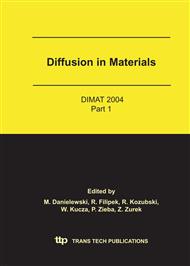p.1072
p.1081
p.1093
p.1101
p.1107
p.1115
p.1121
p.1129
p.1135
Long-Term, Cyclic Oxidation Behaviour of Alumina- and Chromia-Forming Alloys
Abstract:
The oxidation resistance behaviour of a number of surface-treated FeCrAl commercial alloys and some model alloys of well-defined composition, incorporating a range of reactive elements in trace amounts, has been studied under thermal cyclic conditions in air with and without additions of water vapour. Additions of reactive elements such as Zr, La, Y, Hf modify the oxidation resistance behaviour of FeCrAl-alloys by improving the scale adherence and consequently may extend the lifetime of FeCrAl steels. The presence of the water vapour can affect oxidation in a number of different ways. Our results may indicate that high content of water vapour can cause the lives of such alloys to be decreased. This work forms part of a larger European-funded project to evaluate physical properties, microstructural features, oxidation/corrosion resistance and lifetime improvement. The correlation between alloy parameters and lifetime; as well as the modeling of oxide scale behaviour as function of cycling conditions is also studied.
Info:
Periodical:
Pages:
1107-1114
Citation:
Online since:
April 2005
Authors:
Price:
Сopyright:
© 2005 Trans Tech Publications Ltd. All Rights Reserved
Share:
Citation:


